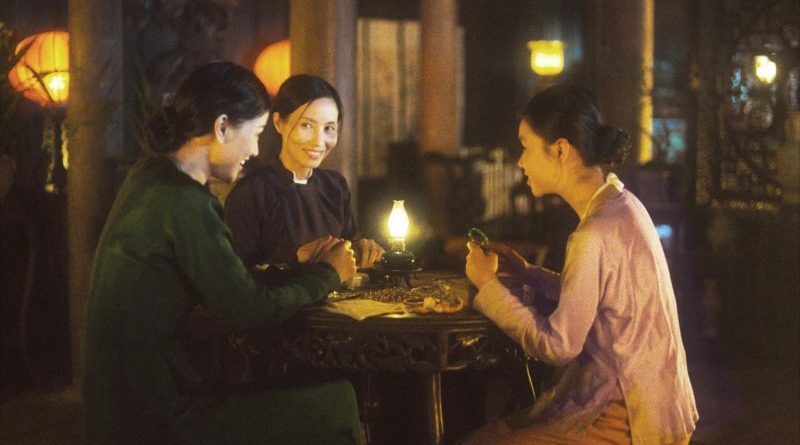INTERVIEW: Three generations of women come into focus in ‘The Third Wife’
Photo: Ash Mayfair’s The Third Wife tells the story of three women in 19th century Vietnam. Photo courtesy of Film Movement / Provided by Film Forum press site with permission.
The Third Wife, a new film from writer-director Ash Mayfair, follows three generations of women who are all married to the same man in 19th-century Vietnam. Mayfair’s focus is largely drawn to the title character, 14-year-old May, who is the third wife in this restrictive patriarchal structure.
Mayfair was inspired to tell the story because of her family’s own history and the experiences of her great-grandmother.
“This is my family’s story,” Mayfair said in a recent phone interview. “I grew up in Vietnam, and I lived with these women. … I was always interested in stories about womanhood, you know childbirth, coming-of-age stories. I thought I was going to write a novel about this when I was in college, but when I got into film school, grad school in particular in the final year, I talked to my friends and my professors. And they encouraged me to write the screenplay, and that was it. I started from there.”
The production was expansive and time-consuming. For The Third Wife, there were long shoot days, and Mayfair had some restrictions on hours because there were young people on the set. Some inclement weather also delayed production, but the challenges were never insurmountable.
Throughout the overall shoot, Mayfair developed a good working relationship with her director of photography, Chananun Chotrungroj, and their collaboration created a lush, atmospheric look that transports viewers more than 100 years back into the late 19th century.
“She understood me very well,” the director said. “Visually all I told her was every frame I wanted it to look like a watercolor painting, and so from that very single seed of the idea, we decided on the framing. We decided on the pacing. We decided on the camera movement. We decided on the use of natural light. She devised little contraptions, so to speak, where we could use live fire as key sources for all the interior scenes. So everything you see, except for the moonlight, is real fire, for example. That kind of thing came through because we did prep together and did a lot of trials and errors together to get the look.”
Setting the film in the late 19th century made sense given the real-life story of Mayfair’s great-grandmother.
“The initial preparation was interesting and somewhat challenging because I didn’t want to build anything in the studio,” she said. “I wanted everything to be on location, so we spent a very long time looking for old houses, remnants of houses, so to speak, with the architecture that still belongs to the period. Also the location, we had to go very far away literally in the middle of nowhere in the mountains in Vietnam because I didn’t want to use any CGI.”
The young actor at the center of the narrative, Nguyễn Phương Trà My, is new to acting and had never performed on screen before, so the director spent a good amount of time in the prep period going over the process. It was obvious that Mayfair chose wisely.
“I think we spent roughly seven to eight months traveling the country looking for this actress, and I went to every single school,” she said. “I must have auditioned I think about 900 girls for the role.”
Once on set, the cast had the freedom to explore their characters through improvisation. This was an intentional choice by Mayfair.
“A lot of it was improvised,” she said. “I wrote the screenplay, but the screenplay when we started shooting was less than 70 pages. So I wrote the framework mostly because I knew that once I’m on set, certain descriptions would become completely irrelevant. The relationships between the characters became emphasized and strengthened because I asked them to be on set, on location with me a few weeks, like several weeks before we started shooting, and so we were living in the location as if we belonged to that family.”
She added: “I dressed as a servant. I walked around. I observed them, ate together in costumes and in characters, and naturally improvisation came out of there.”
The result is a wholly realistic movie that tells an important story about the inner strength of women within a patriarchal system.
By John Soltes / Publisher / John@HollywoodSoapbox.com
The Third Wife, directed by Ash Mayfair, is now playing the Film Forum in New York City. Click here for more information and tickets.

